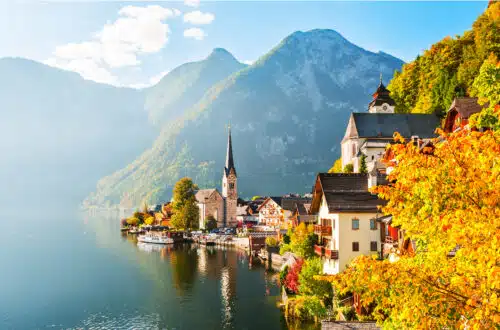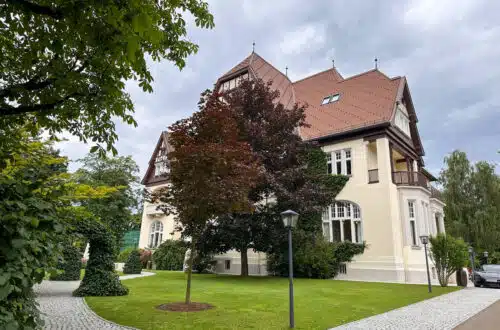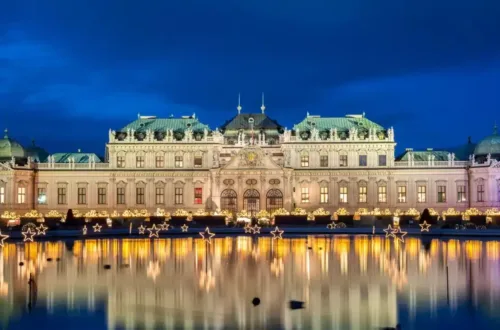Best Places To Visit in Styria, Austria (By District)
Are you wondering about the best places to visit in Styria, Austria? Then I got you covered!
Styria, also known as the green heart of Austria, is a foresty state with lots of mountains, located in the southern part of Austria. Styria is famous for its castles, spas, and wines.
While many people who go to Austria visit more famous areas, such as Vienna, Salzburg, or Tyrol (mainly for winter holidays), slow travelers and couples might find themselves happier in the increasingly attractive holiday destination Styria.
The capital city of Graz is right in the middle of it – the perfect place to start exploring. I have lived all my life in Styria, so I know all the best spots you need to see in Styria, Austria.
To make sure you don’t miss an amazing spot, I have created this post!
Let’s get to it!

This post may contain affiliate links. As an Amazon Associate, I earn a small commission from qualifying purchases at no additional cost to you. Read my disclaimer for further information.
The Districts of Styria, Austria
Styria is divided into a total of 12 administrative districts, known as Bezirke in German.
I have picked out the most interesting spots to visit in my favorite districts in Styria, Austria
- Graz (Stadt) – City of Graz
- Graz-Umgebung – Graz-Umgebung District
- Bruck-Mürzzuschlag
- Deutschlandsberg
- Hartberg-Fürstenfeld
- Leibnitz
- Leoben
- Liezen
- Murau
- Murtal
- Südoststeiermark – South-East Styria
- Weiz
Things To Do in Styria
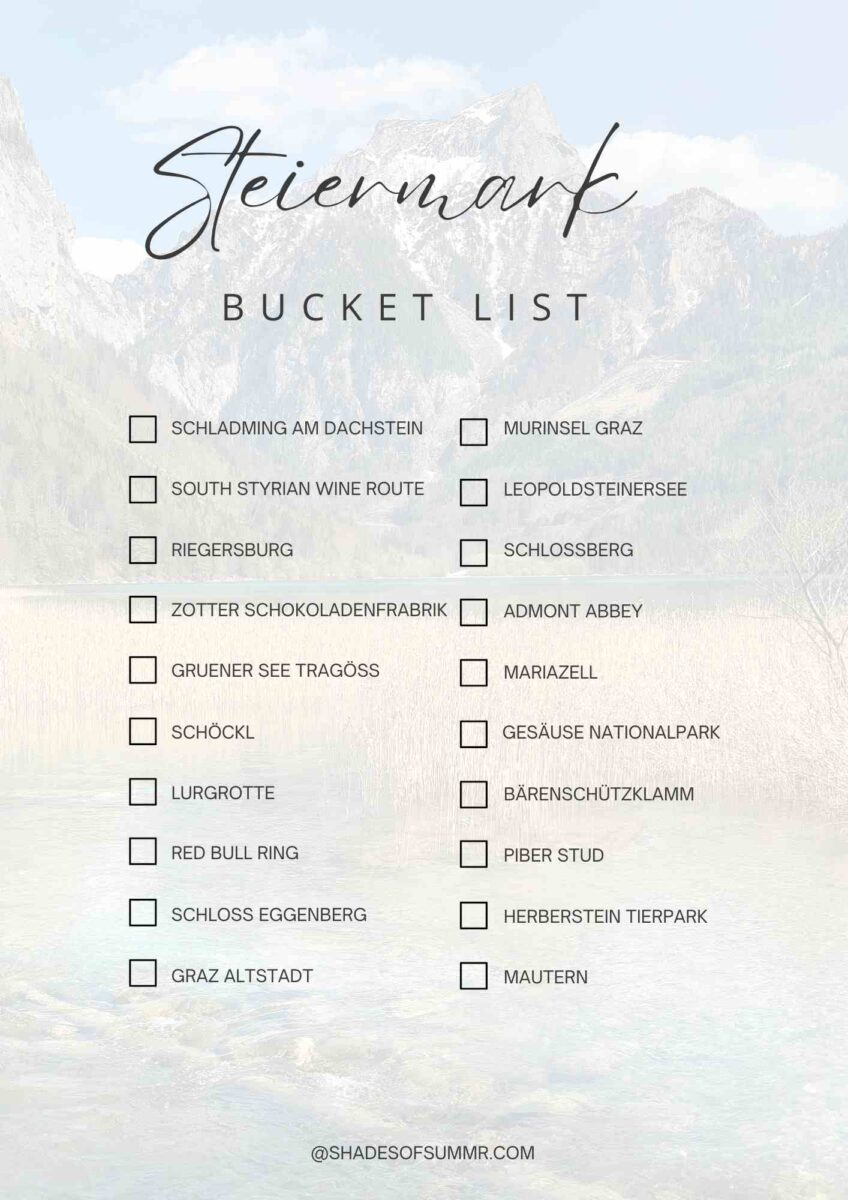
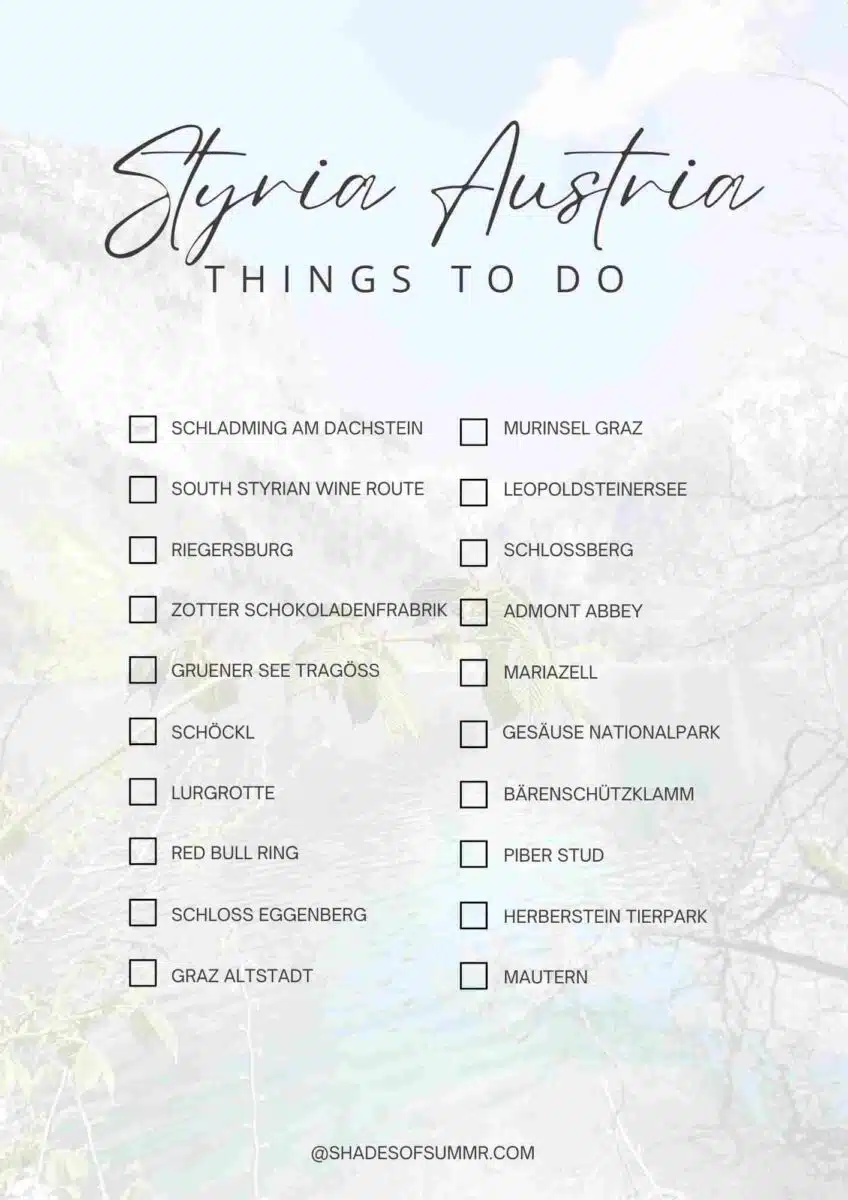
1. Liezen – Dachstein

Dachstein is an impressive mountain range in the Northern Limestone Alps. The Dachstein is located in the southeastern part of Austria.
It stretches across the border between Upper Austria and Styria.
The Dachstein massif is famous for its rugged limestone peaks, deep valleys, and impressive cliffs. The highest point is Hoher Dachstein, reaching an elevation of 2,995 meters (9,826 feet).
In addition to being a stunning backdrop for your photos the area around the Dachstein Glacier offers plenty of unforgettable experiences.
You can visit the Stairway to Nothingness, the suspension bridge, the Sky Walk, and the Ice Museum. The nearby town of Schladming is a small former miners’ town that has turned into the touristic center of the region.
In winter the Dachstein region offers plenty of skiing opportunities and during summer turns into a paradise for hikers.
During winter times, several famous FIS ski competitions are being held in the Dachstein area, among them the famous Schladming Night Race.
Make sure to check out Hallstatt, if you are in the area. Especially in winter Hallstatt is stunning.
You can also go to Hallstatt from Vienna.
2. Murtal
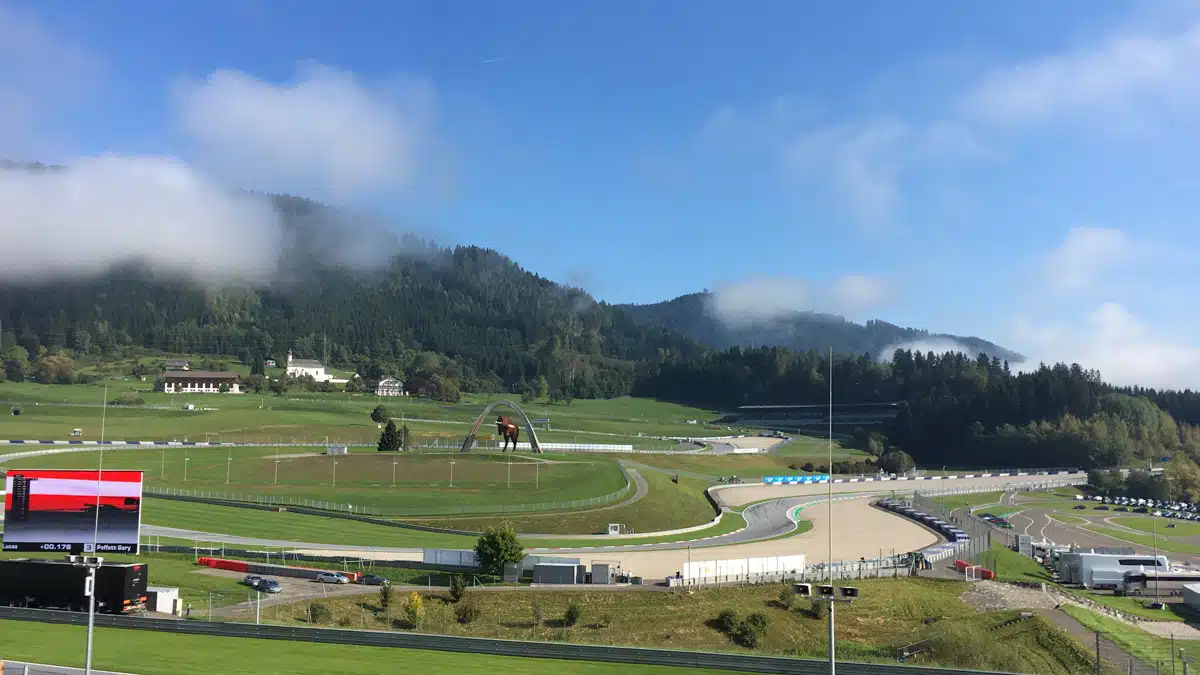
Murtal is another beautiful district in Upper Styria. It is also where I grew up!
The district of Murtal has become very popular over the last couple of years, mainly due to the return of the famous Formula 1 Race in the town of Spielberg. Also, the huge investments the Red Bull company has made in the area made a difference.
Castles have been restored and transformed into luxury spas, hotels, and restaurants. You can spend some quiet leisure time while enjoying everything the region has to offer in a culinary and cultural way.
Make sure to check out the G’schlössl in the region Murtal for a quiet spa time out or the Steirerschlössl for a delicious meal in a great atmosphere. It is one of the best hotels near Red Bull Ring.
Other great attractions in the area are the Sternenturm in Judenburg, the highest planetarium in the world.
3. Bruck-Mürzzuschlag
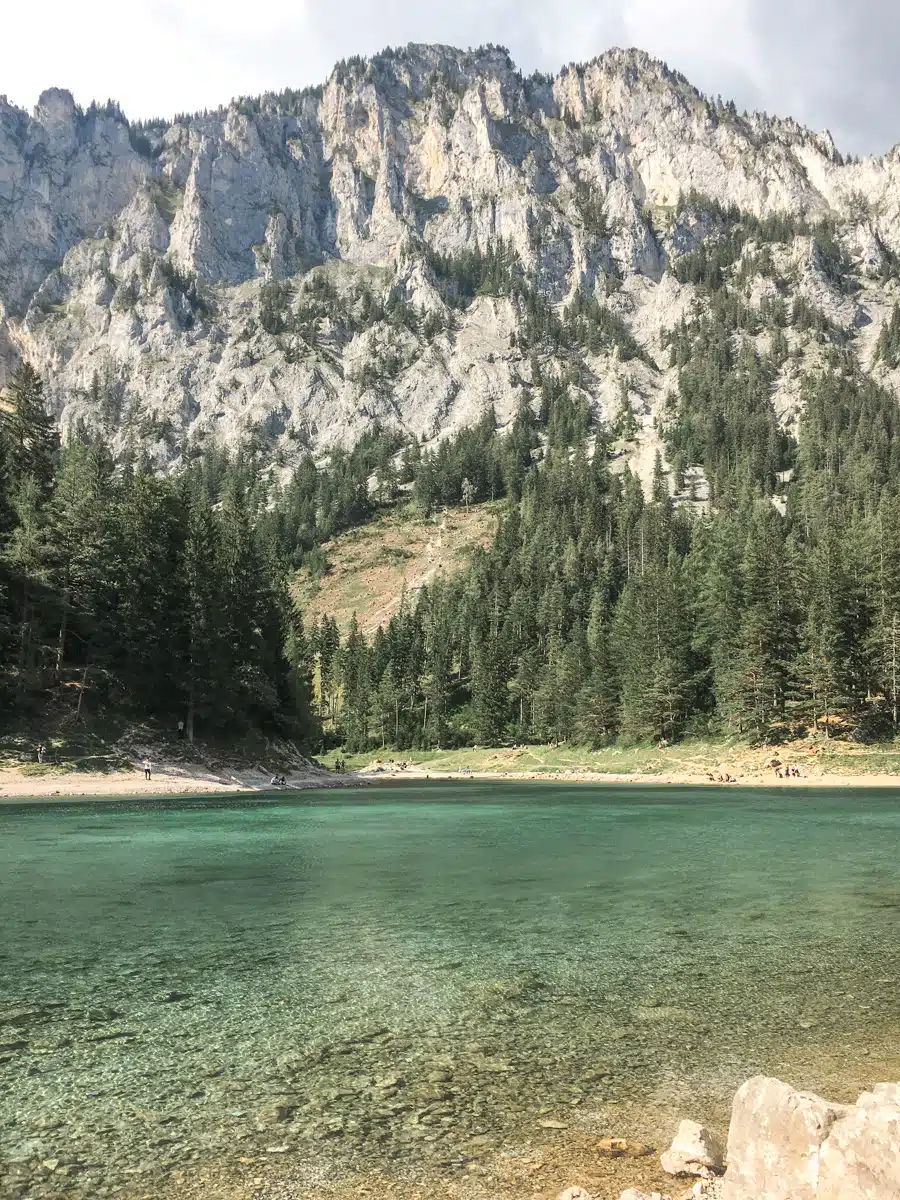
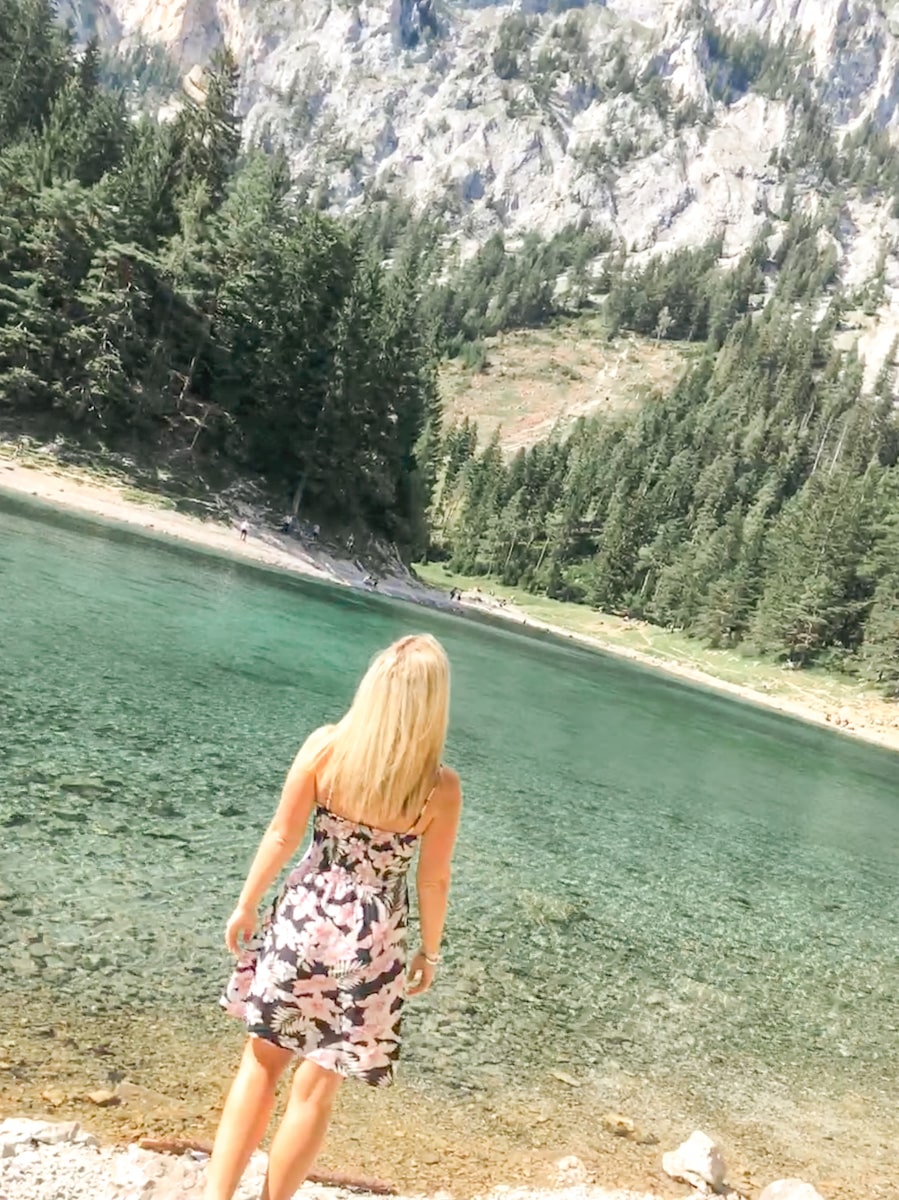
Nature lovers will love the stunning lakes that you can find in between the mountains in the district of Bruck Mürzzuschlag.
The most famous of them all is the Grüner See (Green Lake) in Tragöß. The water is crystal clear and the backdrop of the mountains is beyond impressive.
What makes Grüner See remarkable is its seasonal transformation. During the winter and early spring, the lake is relatively shallow, with a depth of only 1 to 2 meters (3 to 6 feet).
However, as the snow from the surrounding Hochschwab Mountains melts in late spring and early summer, the lake rises to depths of up to 12 meters (39 feet). The entire park area will be underwater, creating an enchanting underwater landscape.
Sunlight reflecting off minerals gives the Grüner See a striking emerald hue, making it a visually stunning sight.
4. Leoben
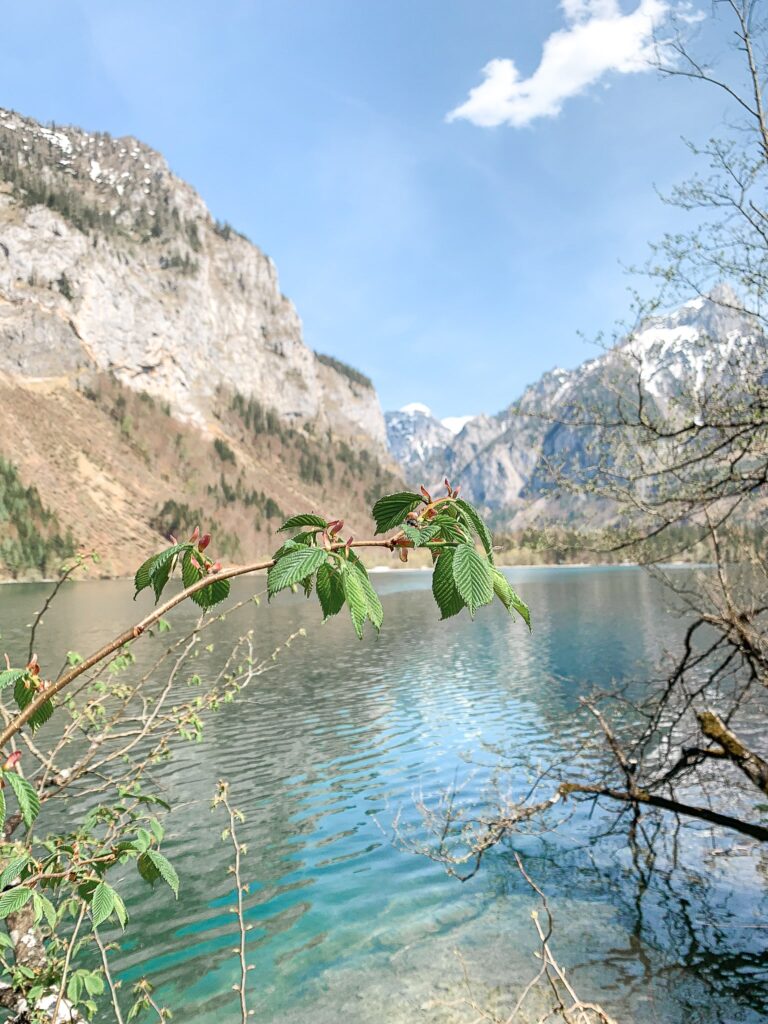
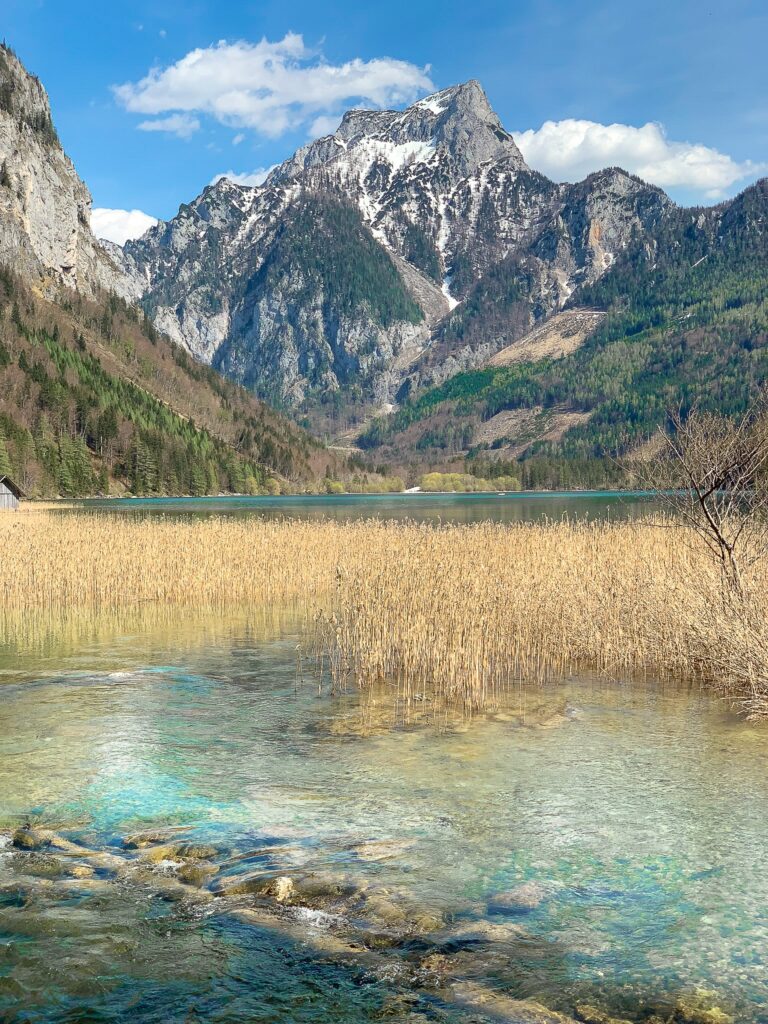
Sadly, the Grüner Lake in Bruck-Mürzzuschlag has become quite overrun with tourists in the last couple of years.
Alternatively, I suggest visiting the Leopoldsteinersee in the district of Leoben instead.
The watercolor is just as stunning, the mountain backdrop is even more impressive, and fewer tourists are blocking your view. Even the drive there is impressive in itself.
You can drive over the Erzberg, a mountain where they mine ore.
5. Südoststeiermark (South-East-Styria)
My favorite part of the country is the southernmost part of Styria, filled with lush green rolling hills, endless vineyards, and picturesque little villages.
The area can be divided into three major wine regions, the Vulkanland (volcano land), South Styria, and West Styria. The South Styrian Wine Street is famous for its culinary highlights and is sometimes referred to as the Tuscany of Austria.
The Vulkanland is in the southeastern part of the country. It is named after the residual pieces of volcanic soil in the ground.
A wide variety of grapes can be found in the Styrian wine regions, the most common being the Sauvignon Blanc. In the region of Vulkanland, you can mostly find Schilcher and Traminer.
Not only the wines of the area are famous but also the food is very special. In the so-called Buschenschanken (traditional wine taverns) you can eat traditional plates of meats and cheeses from the regions alongside your glass of wine.
There are many different thermal spas in the area of the Vulkanland as well, my favorite being the spa Bad Radkersburg. It is located close to a small but picturesque town near the border with Slovenia.
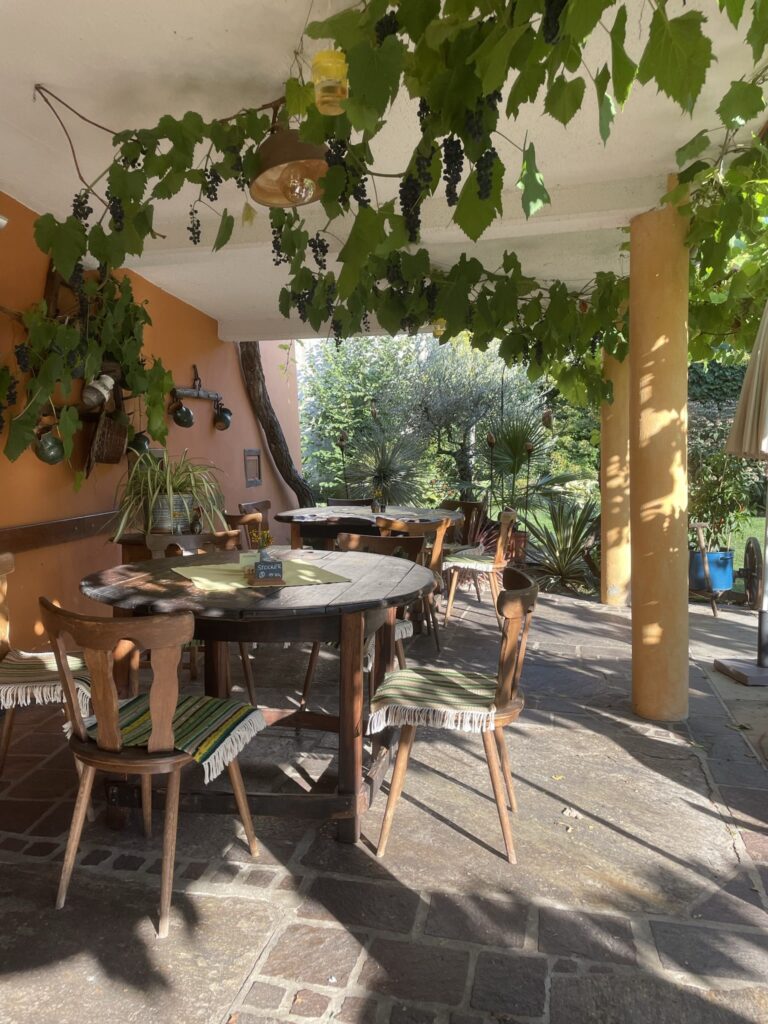
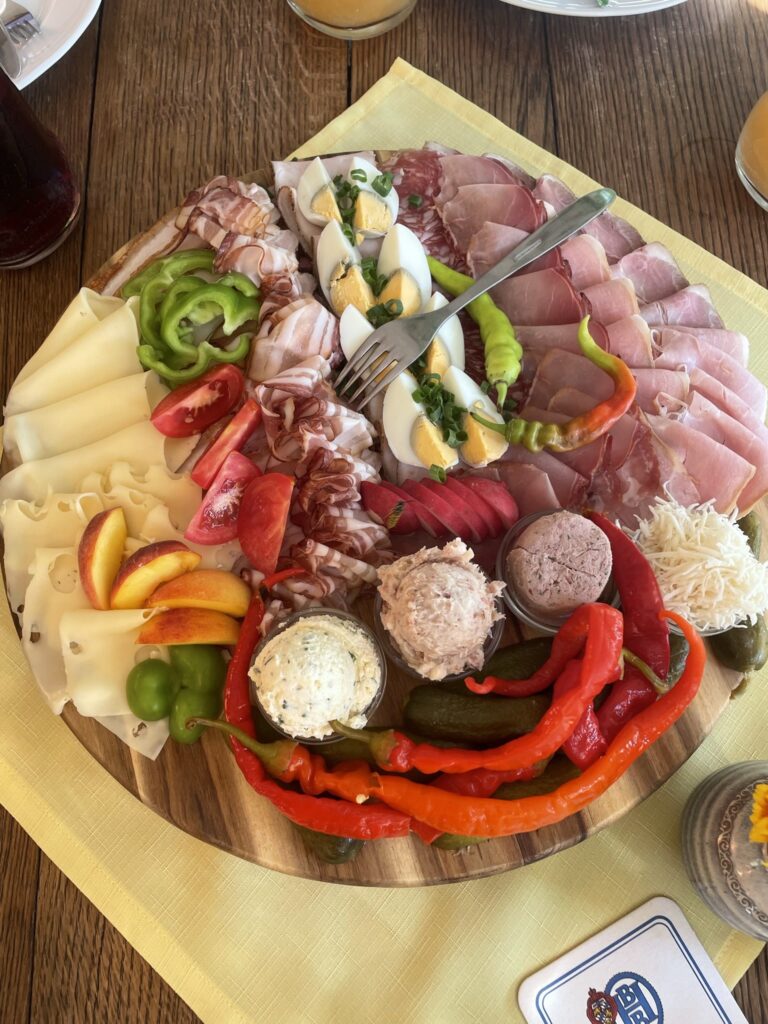
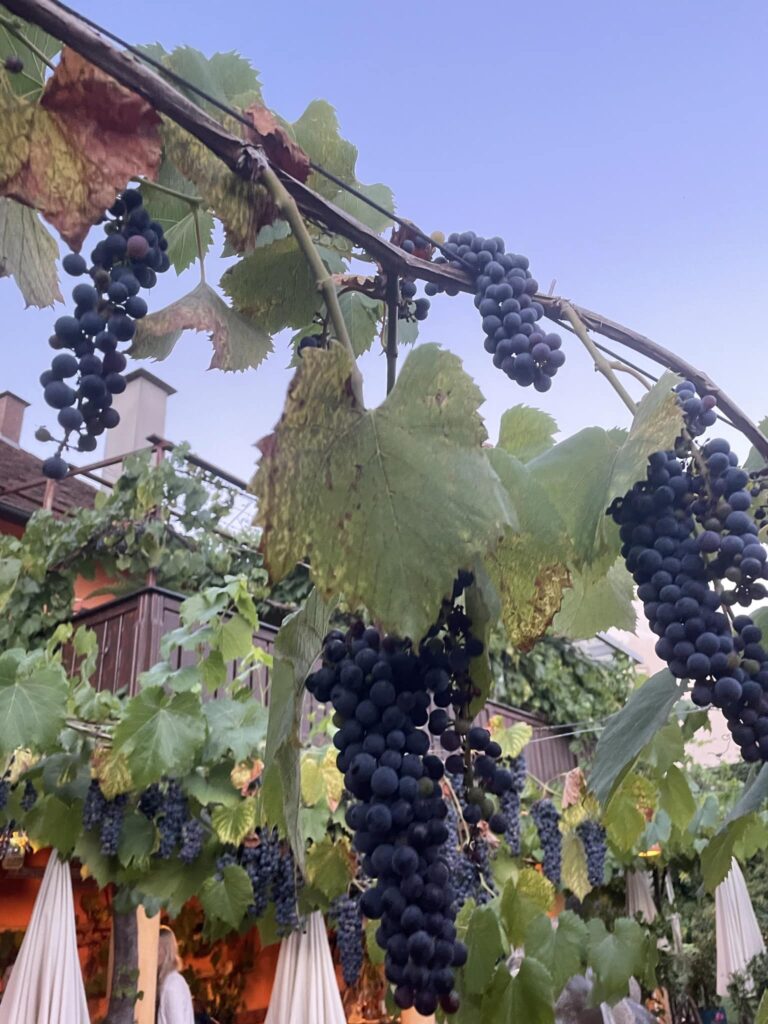
6. Graz
Graz is the capital city of Styria, located in southeastern Austria. It is the second-largest city in Austria and a vibrant cultural and economic hub.
Graz has a rich history dating back to the Roman era. The historic city center is a UNESCO World Heritage Site.
The city features some interesting architectural styles: Renaissance, Gothic, Baroque, and modern designs. One of the best landmarks to visit is the Schlossberg, a hill with a clock tower offering panoramic views.
The Graz Cathedral, the Graz Opera House, and the Landhaus, which houses the regional government, are also worth visiting.
Graz is known for its cultural scene. The city is home to numerous museums, galleries, theaters, and music venues. The Kunsthaus Graz, an iconic modern art museum, stands out with its unique architecture.
One of the biggest festivals in Graz is the Aufsteirern each year in the fall.
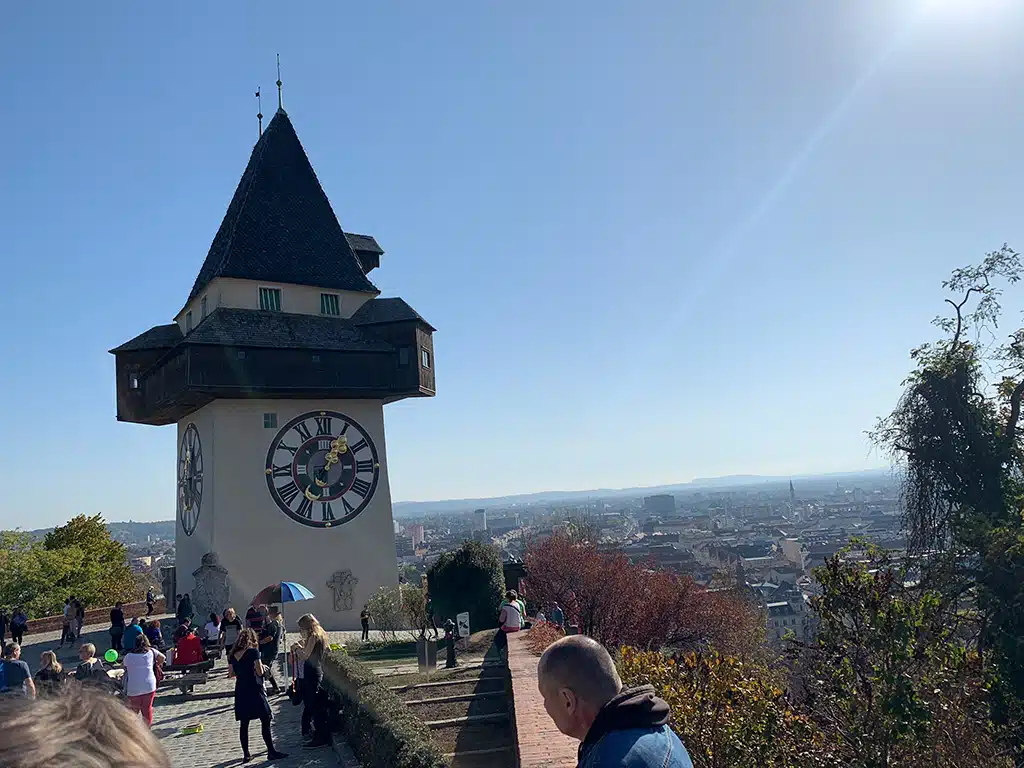

7. Graz-Umgebung
The district of Graz-Umgebung is located in the southeastern part of Styria, Austria. It surrounds the city of Graz and is famous for its picturesque mountains and beautiful lakes.
Located on the outskirts of Graz, Schloss Eggenberg is a magnificent Baroque palace and a UNESCO World Heritage Site.
Rein Abbey (Stift Rein) is a Cistercian monastery founded in 1129 and is also worth visiting.
One of the most impressive cave systems in Austria is also located in Graz-Umgebung. The Lurgrotte Cave is located near Semriach. You can take a tour of fascinating chambers, stalactites, and underground rivers.
The Piber Federal Stud is one of my favorite places in Graz-Umgebung. It is located in the village of Piber, and the stud farm is famous for breeding Lipizzaner horses.
Other interesting things to see are the Freilichtmuseum Stübing and the Schwarzelsee (Lake).

8. Deutschlandsberg
The district of Deutschlandsberg is located in the southwestern part of Styria, Austria. It is known for picturesque landscapes, vineyards, and historical sites.
The iconic Deutschlandsberg Castle is a medieval fortress dating back to the 12th century. The castle houses a museum that showcases the history of the region.
Demmerkogel Nature Park is a beautiful natural area with hiking trails and breathtaking views. It is an ideal spot for nature enthusiasts and outdoor activities.
The Freilichtmuseum Deutschlandsberg showcases the rural lifestyle and architectural heritage of the region. You can explore traditional farmhouses, workshops, and exhibits telling a story about the local history.

9. Hartberg-Fürstenfeld
The district of Hartberg-Fürstenfeld is located in the eastern part of Styria, Austria. It is home to charming towns, and scenic landscapes and offers a rich cultural heritage.
Hartberg Old Town is the historic center of Hartberg. It is known for its well-preserved medieval architecture. Wander through the narrow streets lined with colorful facades, visit the main square with its town hall and fountain, and discover charming shops and cafes.
The Pöllau Valley Nature Park is a beautiful natural area with lush forests, rolling hills, and flowing streams. It has many different walking and hiking trails and some cute picnic areas.
Lastly, make sure to visit the impressive Fürstenfeld Abbey, a former Cistercian monastery. It was founded in the 12th century. The abbey has a magnificent church, beautiful gardens, and a museum.

10. Weiz
The district of Weiz is located in the eastern part of Styria, Austria. There are quite a few fun things to do in the district of Weiz.
You can explore the historic center of Weiz, which also has some stunning medieval architecture. Stroll through the picturesque streets, admire the colorful facades, and visit the Stadtpfarrkirche (town parish church).
The Raabklamm Gorge is a natural wonder located near Weiz. It offers beautiful hiking trails that take you through lush forests, along the banks of the Raab River. It is famous for its impressive rock formations.
Take a ride on the Feistritztalbahn, a historic railway that runs through the picturesque Feistritz Valley.

11. Leibnitz
The Leibnitz district is located in the southern part of Styria, Austria.
The Leibnitz district is part of the South Styrian Wine Road. You can take a leisurely drive or bike ride along the road and explore the vineyards, wineries, and wine taverns (Buschenschanken).
A great place to visit is Seggau Castle, a historic castle that dates back to the 12th century and is now used as a conference center and hotel.
Located near the border of the Leibnitz district, Riegersburg Castle is a striking medieval fortress situated on a volcanic hill. The castle is known for its falconry center, where you can see a show of impressive birds.
Make sure to visit the Zotter Chocolate Factory to taste all the yummy chocolate and learn about the process of making it.
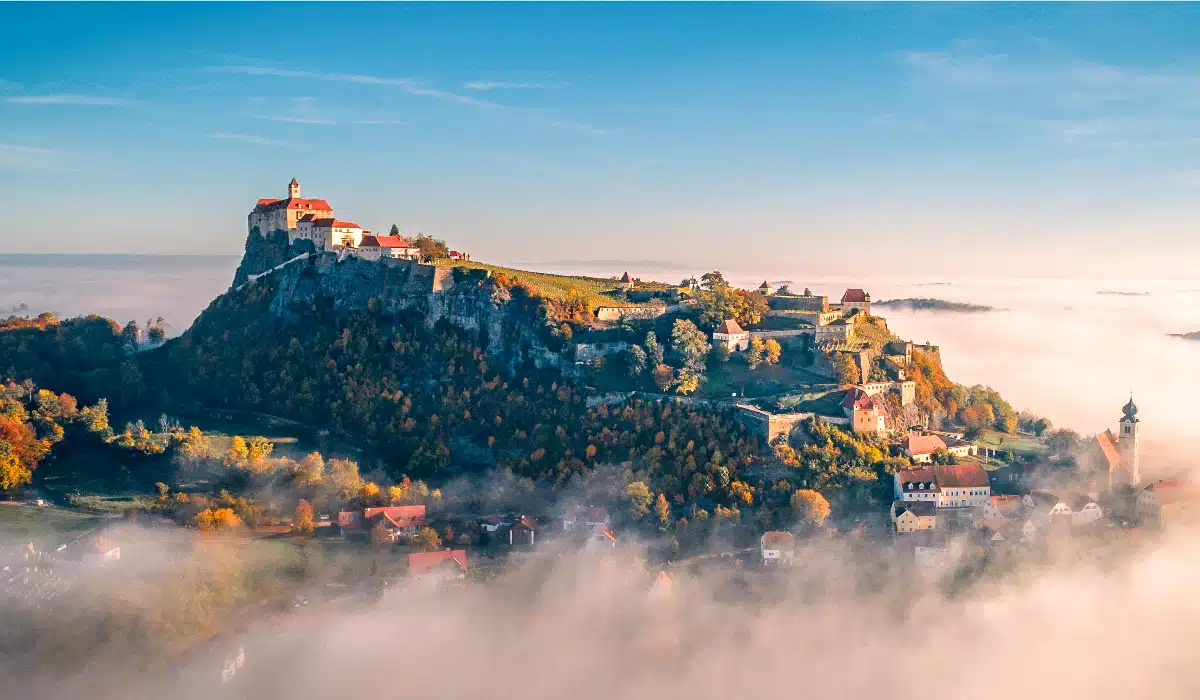
12. Murau
The Murau district is located in the western part of Styria, Austria. It is known for beautiful landscapes, historic towns, and outdoor sports opportunities.
Explore the charming Murau Old Town and see attractions like the Murau Castle and the St. Matthew Church.
The Murau Castle is a medieval fortress that overlooks the town of Murau. The castle is home to a museum that showcases the history of the region and includes the Murau Beer Museum.
Enjoy winter sports at the Kreischberg Ski Resort, located near the town of Murau. It offers plenty of ski slopes, snowboarding opportunities, and other winter activities.
In the summer, the resort transforms into a mountain biking and hiking destination.

How to Get Around Styria, Austria
Located just outside the capital city of Graz is the only Airport in the region, Graz-Thalerhof. The airport is very small, yet modern, and can be reached from lots of major European cities.
The airport is not too far from the city, so you can grab a cab or a train to reach Graz.
I strongly recommend for everyone arriving without their own car to get a rental car at the airport.
Public transport is not amazing in rural areas, so you need a car to reach the most beautiful places in Styria, Austria.
Do I need Travel Insurance for Styria? Yes, Travel Insurance is always recommended. While Styria per se is not unsafe, it is necessary to have Travel Insurance in case of sickness or accidents. EKTA offers worldwide coverage at amazing prices – without any hidden fees or clauses.
Where Is Styria in Austria?
Styria (Steiermark in German) is a federal state (Bundesland) located in the southeastern part of Austria. It is one of the nine federal states of Austria.
Styria is bordered by several neighboring states:
Carinthia (Kärnten) to the south.
Slovenia (Slovenija) to the south, with a short international border.
Burgenland to the east.
Lower Austria (Niederösterreich) to the northeast.
Upper Austria (Oberösterreich) to the north.
Salzburg to the northwest.
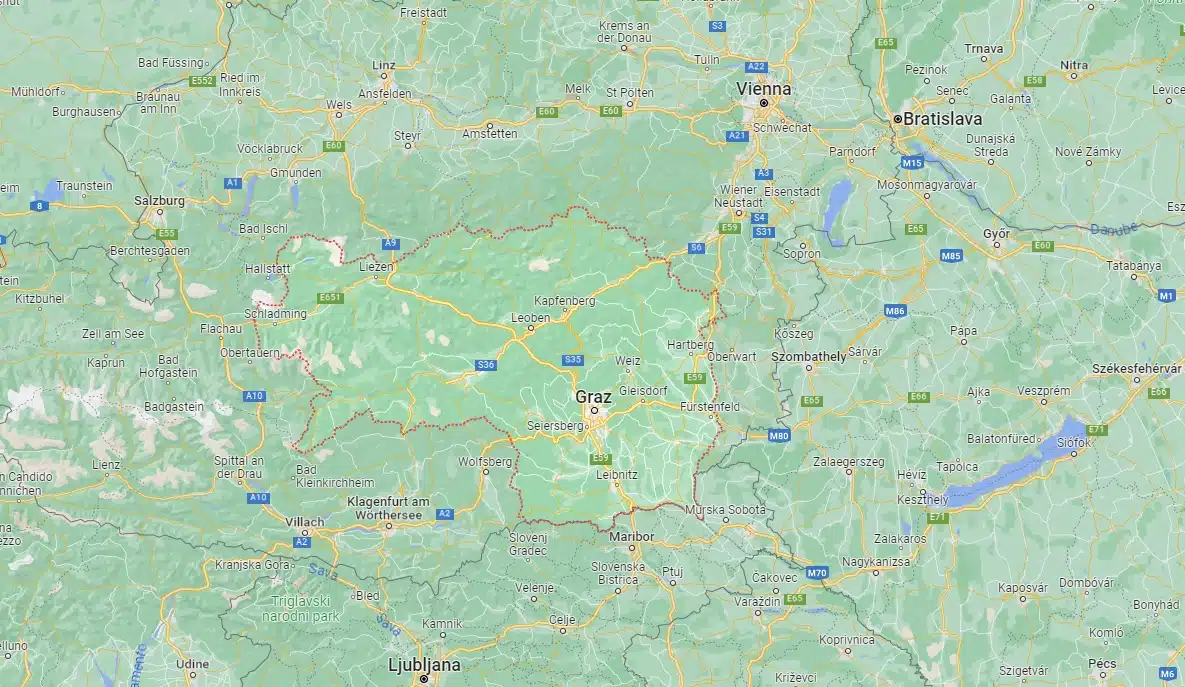
What Is Styria Known For?
Styria is known for its diverse landscapes, rich cultural heritage, and various tourist attractions. Here are some of the things that Styria is known for internationally:
- Wine Production: Styria is famous for its wine regions, particularly for white wines. The South Styrian Wine Road offers picturesque vineyards and cute little wine taverns where you can try the wines and eat regional products
- Graz: Graz is the capital city of Styria. The city of Graz is a UNESCO World Heritage Site and a vibrant cultural center. It has a well-preserved historic city center with impressive architecture.
- Thermal Spas: Styria is internationally known for its thermal spas. They offer relaxation and wellness experiences.
- Pumpkin Seed Oil: Styria is the primary producer of high-quality pumpkin seed oil.
- Outdoor Activities: Styria, Austria is characterized by rolling hills, picturesque vineyards, and the imposing Dachstein mountain range. In the area, you can enjoy hiking, cycling, skiing, and other outdoor activities. You can even do adventurous sports, such as paragliding, rock climbing, canyoning, and white-water rafting.
- Culture and Festivals: Styria hosts many cultural events and festivals throughout the year. The “Styriarte” festival is a renowned classical music festival held in Graz.
- Formula 1: Styria is home to the famous Red Bull Ring. The Austrian Grand Prix is one of the biggest races held there each year
Is Styria, Austria Worth Visiting?
In my opinion, Styria Austria is very well worth visiting. You can spend beautiful leisurely time all over the country. The many different nature areas have something to offer for any kind of visitor.
Personally, I would recommend visiting Styria in winter times.
The fabulous Christmas markets, that you can basically find in any small town are such a unique feature of the county. Also, thermal spas are that much cozier on a snowy day.
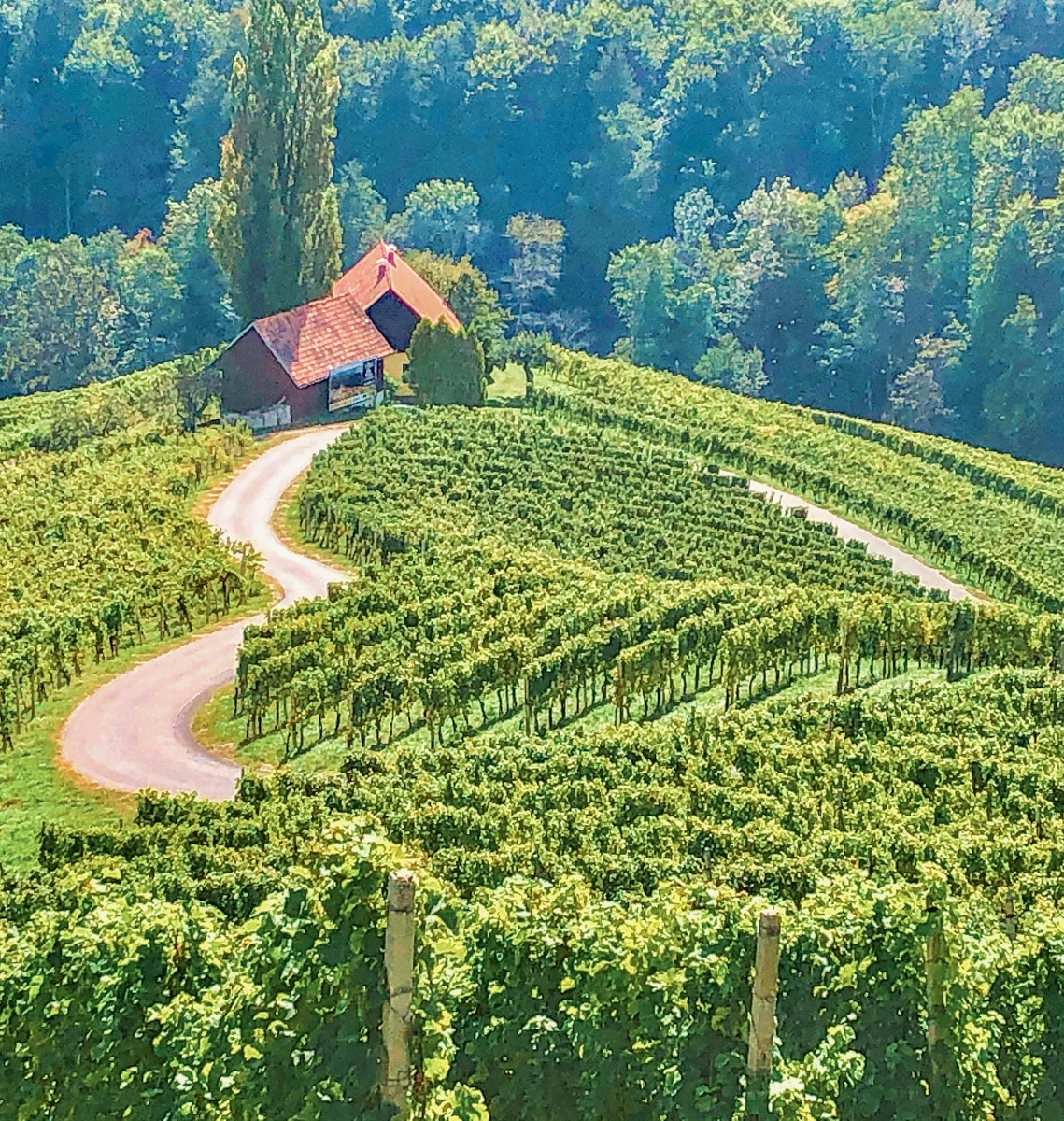
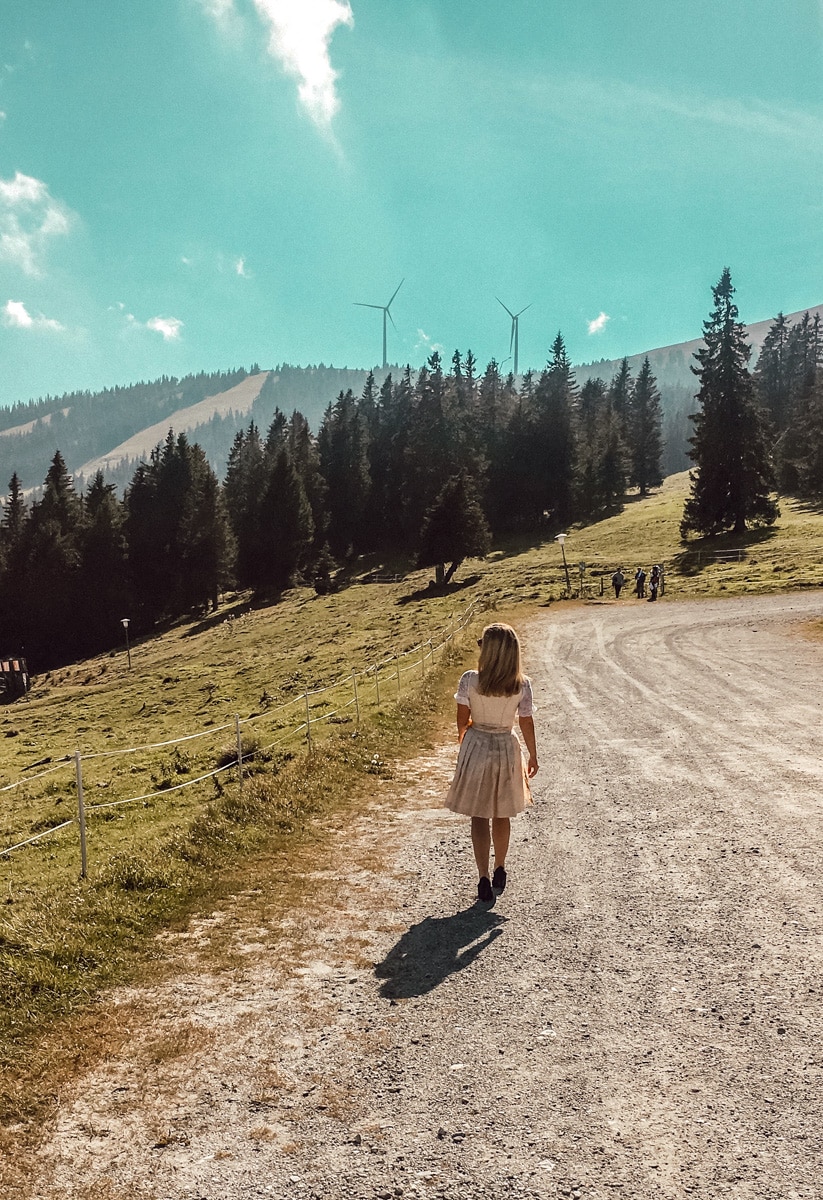
What to Eat in Styria, Austria
There are plenty of different regional products from Styria that I recommend you try during your trip.
The southernmost part of Styria is famous for its Kürbiskernöl (pumpkin seed oil). This has influenced the entire cuisine around the area. You will find the oil in traditional pumpkin soup, over a green salad, and sometimes even on top of vanilla ice cream.
Another famous product of the Vulkanland area is the Vulkanlandschinken (ham). You will most likely find it in one of the traditional taverns, the Buschenschank.
Starting in August, most restaurants will serve you Eierschwammerl (chanterelle), which grows in the forests of Upper Styria. You will find them in salads, as a side dish to meat, and fried with scrambled eggs. Some people serve it as part of the Goulash.
In addition to the wine, the area around Graz is also famous for a certain kind of liquor, the Jägermeister. Jägermeister is a German digestif. They make it from 56 herbs and spices.
While the Jägermeister corporation is technically a German company, one of the largest producers, Bauer is located in Graz.
Lastly, the area of Upper Styria is home to a special tree, the Zirbe. It is a sort of pine tree. The pine is being used for different foods and drinks, such as Zirbenchocolate and Zirbenschnapps (strong liquor). The taste is not for everyone, but definitely worth a try.
Weather in Styria Austria
Styria, Austria experiences a continental climate with four distinct seasons – this means you can really feel the seasons changing!
Winters in Styria are cold and snowy, with temperatures often dropping below freezing.
Spring brings milder temperatures and occasional rain showers, with blossoming flowers and green landscapes.
Summers in Styria are generally warm and pleasant, with average temperatures ranging from 20 to 25 degrees Celsius.
Autumn is characterized by mild temperatures and beautiful foliage as the leaves change color.
Rainfall is evenly distributed throughout the year, but summer months tend to have slightly less rain.
What Are Good Day Trips from Graz?
- Vienna: Explore Austria’s capital with its rich history, stunning architecture, and world-class museums
- Graz Surroundings: Discover nearby picturesque towns like Leibnitz, with its wine culture, or Bad Radkersburg for its spa and thermal baths
- Schloss Eggenberg: Visit this beautiful Baroque palace and its stunning gardens right in Graz
- Lipizzaner Stud Farm in Piber: See the famous Lipizzaner horses and enjoy a tour of the stud farm
- Mariazell: A charming pilgrimage town with a stunning basilica and beautiful mountain scenery
- Hochschwab: Hike in the Hochschwab Alps, known for their natural beauty and crystal-clear lakes
- Wine Country: Explore the South Styrian Wine Route, known for its vineyards and quaint villages
- Semmering: Visit the Semmering Railway, a UNESCO World Heritage site, and enjoy the mountainous scenery
- Bruck an der Mur: A historic town with a medieval castle and beautiful river views
- Riegersburg Castle: Explore this impressive castle perched on a volcanic hill and enjoy the views
Conclusion: Styria Austria – the Most Beautiful Spots
I hope I can show you in this post all the most beautiful places in Styria Austria. Make sure to put the South Styrian Wine Route and the Dachstein Glacier on your travel bucket list.
I have grown up in this area and I can’t recommend traveling here enough. The area has a great mix of mountains, lakes, and vineyards, and there is something for everyone.
If you have more time on your hands, make sure to combine your time with an Austrian Road Trip or a couple of days in Vienna.
If you are traveling in winter, make sure to check out the Christmas Markets in Vienna.
Check all Destinations for more inspiration.
FAQ: Styria Austria
Styria, Austria is renowned for its picturesque landscapes, encompassing the stunning Austrian Alps and captivating vineyards. The region is celebrated for its exceptional wines, especially the world-class white wine, Grüner Veltliner. Styria is also recognized for its thermal spas and wellness retreats, offering rejuvenating experiences. Additionally, the capital city, Graz, is a UNESCO World Heritage site known for its charming Old Town and vibrant cultural scene.
Styria, Austria offers an array of activities for visitors. Outdoor enthusiasts can explore the breathtaking scenery through hiking, skiing, and cycling in the stunning Austrian Alps. The region is famous for its thermal spas, providing relaxation and wellness experiences. Wine lovers can indulge in vineyard tours and tastings, while culture enthusiasts can explore Graz’s historic architecture, museums, and vibrant festivals. Styria also offers culinary delights, with traditional Austrian cuisine and gourmet dining experiences.
Graz is absolutely worth visiting! This Austrian city boasts a picturesque historic Old Town, a UNESCO-listed palace with stunning gardens, vibrant cultural attractions, and a welcoming atmosphere. Explore its rich history, savor local cuisine, and enjoy day trips to the scenic Styrian countryside. A charming destination for all.
Yes, there are mountains near Graz. The city is surrounded by the Styrian Alps, part of the larger Austrian Alps. The Schöckl Mountain, just outside Graz, is a popular destination for hiking and offers panoramic views of the city. Additionally, there are several other peaks and alpine landscapes in the region, making it a great place for outdoor enthusiasts.
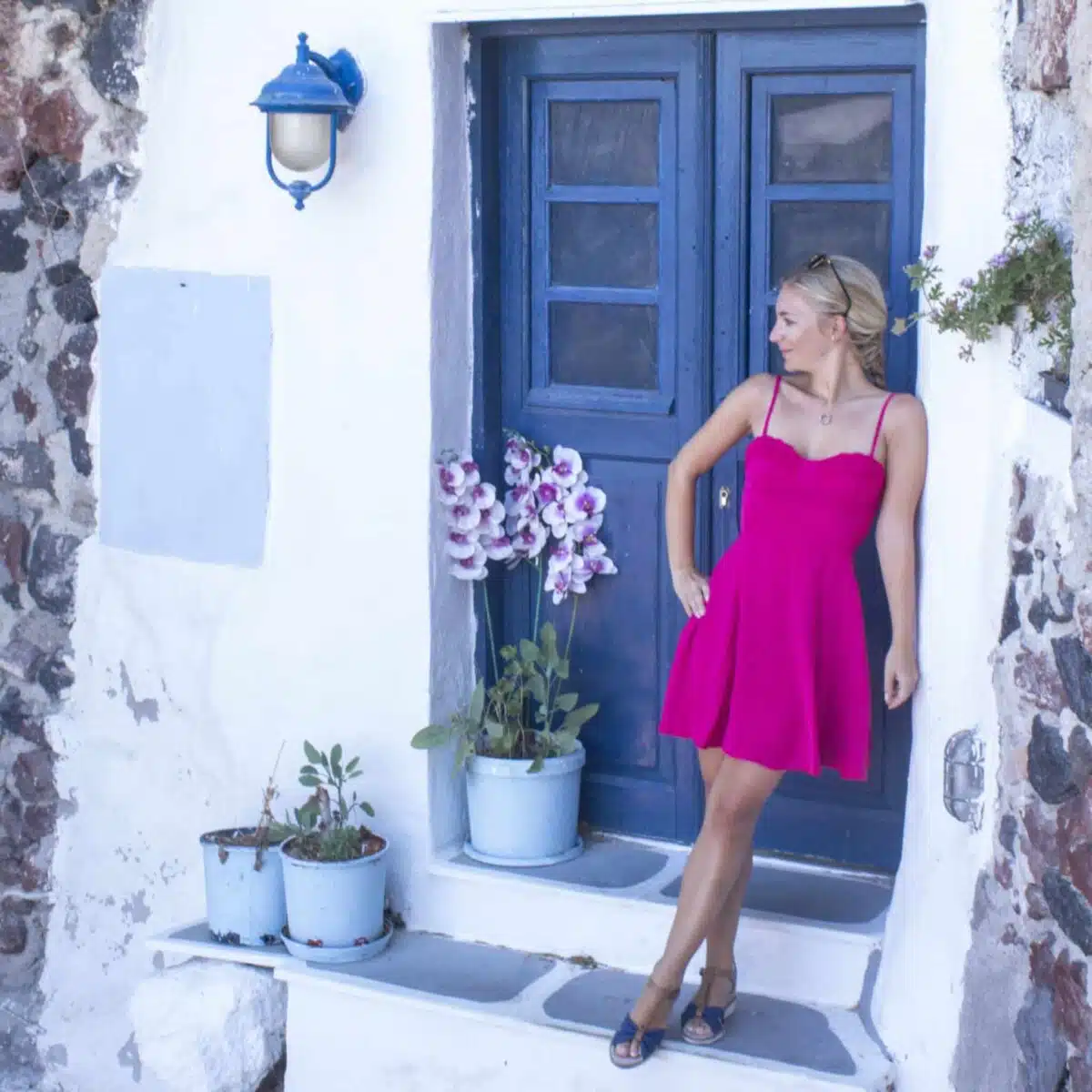
About the Author
Sabrina is a passionate travel blogger and content creator, based in the Netherlands. She spends most parts of the year abroad at various destinations with her husband.
She provides slow-paced itineraries that focus on quality over quantity. Sabrina wants to help her readers to get more out of their travel experiences – while doing less. Read more.


